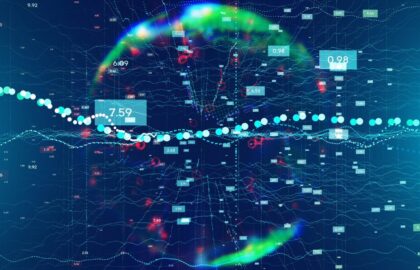Data Science

Data Science
The Complete Guide to Data Scientist Roles and Responsibilities
Modern data scientists combine technical skills with business acumen to drive data-driven decisions The field of data science has evolved dramatically, transforming how organizations handle large datasets and make business decisions. Today’s data scientist job description extends far beyond traditional statistical analysis, encompassing everything from machine learning algorithms to business intelligence. Whether you’re pursuing a […]

Tech Trends
Revealing the Magic of Data Visualization: A Beginner’s Guide
Join us on a journey to explore the art and science of data visualization. Discover the importance of mastering this skill, the various types of charts and graphs available, and the powerful tools that can bring your data to life.

Tech Trends
Understanding Data: A Beginner’s Guide to Data Types and Structures
Explore the essentials of data types and structures in this beginner's guide. Learn about integers, strings, floats, lists, dictionaries and more.

Tech Trends
Intro to Predictive Modeling: A Guide to Building Your First Machine Learning Model
Predictive modeling in data science involves using statistical algorithms and machine learning techniques to build models that predict future outcomes or behaviors based on historical data. It encompasses various steps, including data preprocessing, feature selection, model training, evaluation, and deployment.

Tech Trends
Introduction to Natural Language Processing (NLP) in Data Science
Natural Language Processing (NLP) encompasses a variety of techniques designed to enable computers to understand and process human languages. In this post you’ll learn about NLP applications like text classification and sentiment analysis, plus NLP techniques like tokenization and stemming.

Tech Trends
Rejecting the Null Hypothesis Using Confidence Intervals
After a discussion on the two primary methods of statistical inference, viz. hypothesis tests and confidence intervals, it is shown that these two methods are actually equivalent.

Tech Trends
Kicking It Up a Notch: Exploring Data Analytics in Soccer
The Major League Soccer (MLS) season's kickoff coincides with the rising tide of data analytics in soccer. Let's dive into the fascinating use cases and trends that reveal how data is informing decision-making in the world of soccer.
Browse by Category
- All Categories
- Admissions
- Alumni Stories
- Announcements
- Artificial Intelligence
- Career Advice
- Cybersecurity Engineering
- Data Science
- Denver Campus
- Diversity In Tech
- Enterprise
- Flatiron School
- How To
- NYC Campus
- Online Campus
- Partnerships
- Software Engineering
- Staff / Coach Features
- Tech Trends
- UX / UI Product Design
- Women In Tech
